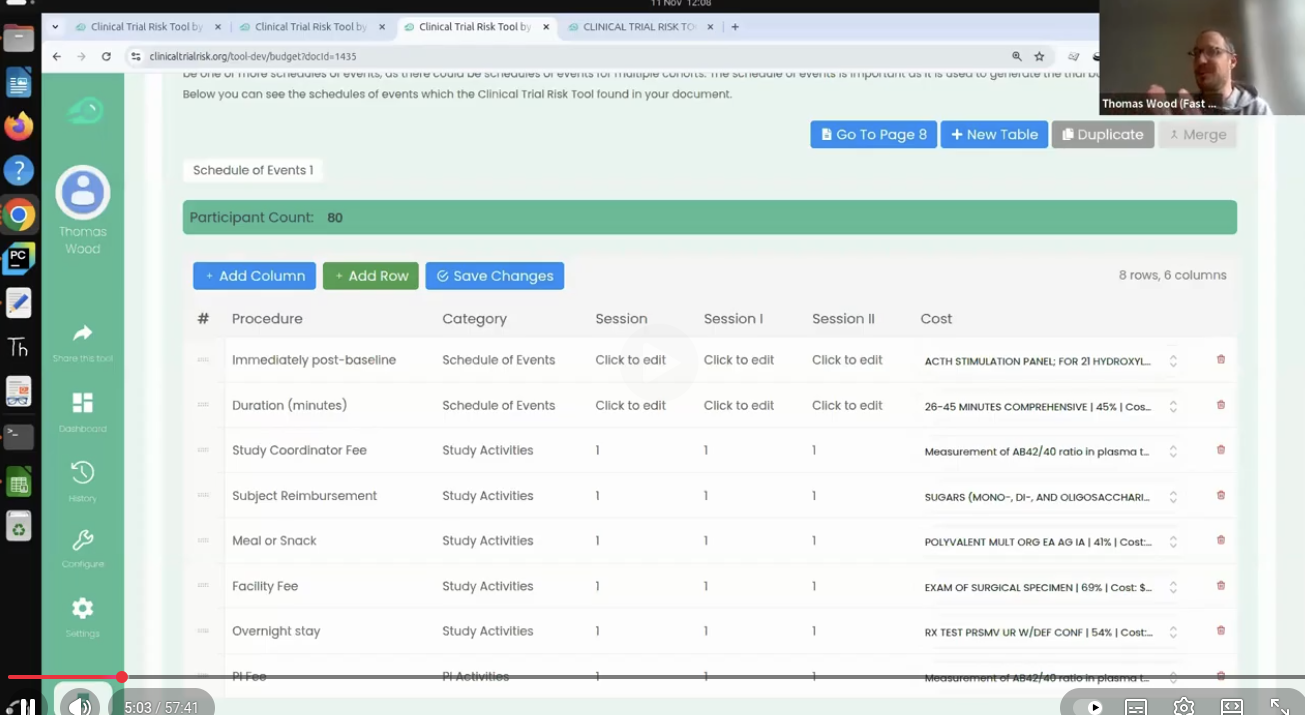
This post originally appeared on Fast Data Science’s blog on LinkedIn.
Budgeting is one of the most critical steps when planning a clinical trial. Clinical trials are complex, multi-phase studies that require significant resources, and understanding the costs associated with each phase is crucial for an accurate clinical trial budget. In this post, we’ll explore the different phases of clinical trials and the key factors that influence their costs, providing insights into how to prepare a comprehensive budget that aligns with your trial’s needs.
Clinical trials progress through phases, each serving a specific purpose, lasting a particular duration, and carrying distinct cost implications. Let’s break down the cost for each phase:
Phase 1 Trials: These trials are designed to assess a drug’s safety and typically involve a small sample of 15-20 participants. The average cost of a Phase 1 clinical trial is around $4 million.
Phase 2 Trials: The drug’s efficacy is tested, often with a larger group of participants. The costs rise considerably, with Phase 2 trials averaging $13 million.
Phase 3 Trials: These pivotal studies involve hundreds or thousands of patients and aim to confirm the drug’s effectiveness across a large, diverse population. They are the most expensive, averaging $20 million or more.
Pivotal Trials: Some pivotal Phase 3 trials, particularly those required for FDA approval, may cost a median of $41,117 per patient.
Each phase of a clinical trial carries its own financial demands, and it is important to allocate funds accordingly based on the trial’s scope.
Aylin Sertkaya and colleagues from Eastern Research Group, Inc., provided these cost estimates in a report submitted to the U.S. Department of Health and Human Services.
The cost of a clinical trial does not solely depend on the phase. Several factors significantly influence the overall budget, making it essential to account for these when planning your clinical trial budget:
Study Size and Recruitment
Geographical Scope
Therapeutic Area
Trial Complexity
Duration and Timeline
Commercial vs. Academic Trials
When preparing your clinical trial budget, it’s vital to forecast the expenses based on the factors outlined above. Here are some key considerations to ensure an accurate budget:
Accurately Estimate Costs by Phase: Start by understanding the average costs of each clinical trial phase and ensure your budget reflects these costs.
Forecast Recruitment and Site Costs: Ensure your budget accounts for the number of patients you plan to recruit and the number of sites involved. Remember to underestimate the costs of recruitment, as slow recruitment can lead to additional infrastructure costs.
Account for Trial Complexity: Trials that involve personalised treatments, rare diseases, or advanced procedures may require more specialised staff, equipment, and longer monitoring periods, which can increase the costs.
Include Regulatory and Logistical Costs: Ensure that your budget includes regulatory submissions, monitoring visits, data management, and patient follow-up costs, which vary depending on the number of countries and sites involved.
Plan for Hidden Costs: Always include a contingency for unexpected costs, such as protocol amendments, regulatory changes, or patient attrition.
Understanding the phases of clinical trials and the factors influencing costs is essential for preparing an accurate clinical trial budget. By taking into account study size, geographical scope, therapeutic area, and trial complexity, you can develop a budget that reflects your study’s true scope and requirements. Accurate budgeting ensures the trial runs smoothly and maximises the likelihood of achieving its objectives within the available resources.
Whether you are conducting an industry-sponsored trial or an academic study, careful financial planning is the key to success in clinical research.
Looking for accurate cost estimates for your clinical trial? Fast Data Science specialises in providing AI-driven solutions to optimise clinical trial budgets. Get in touch with us today!
Additional Reference:
JAMA Intern Med. 2018;178(11):1451-1457. doi:10.1001/jamainternmed.2018.3931

Thomas Wood presents the Clinical Trial Risk Tool at the Clinical AI Interest Group at Alan Turing Institute The Clinical AI Interest group is a community of health professionals from a broad range of backgrounds with an interest in Clinical AI, organised by the Alan Turing Institute. In the group’s November 2025 meeting, the talk was given by Dr Jeff Hogg, Programme Director, MSc AI Implementation (Healthcare), University of Birmingham and Clinical Innovation Officer in AI, University Hospitals Birmingham NHSFT, titled AI Readiness for Health and Care Provider Organisations.

Guest post by Safeer Khan, Lecturer at Department of Pharmaceutical Sciences, Government College University, Lahore, Pakistan Multi-Arm & Multi-Stage (MAMS) Clinical Trials Design Tips The design of clinical trials is increasingly challenged by the Rising Costs, limited availability of eligible patient populations, and the growing demand for timely therapeutic evaluation. Traditional parallel-group designs, which typically compare a single intervention to a control, are often insufficient to meet these pressures in terms of speed, efficiency, and resource utilization.

You can use the t-test when you want to compare the means (averages) of continuous data between two groups, such as blood pressure or maximum concentration of a drug in urine (Cmax). If you have data with a dichotomous outcome, you can use the Chi-Squared test instead - please try our Chi-Squared sample size calculator. The calculator below will calculate the minimum sample size for you. Your expected effect size d is the standardised effect size according to Cohen’s definition.